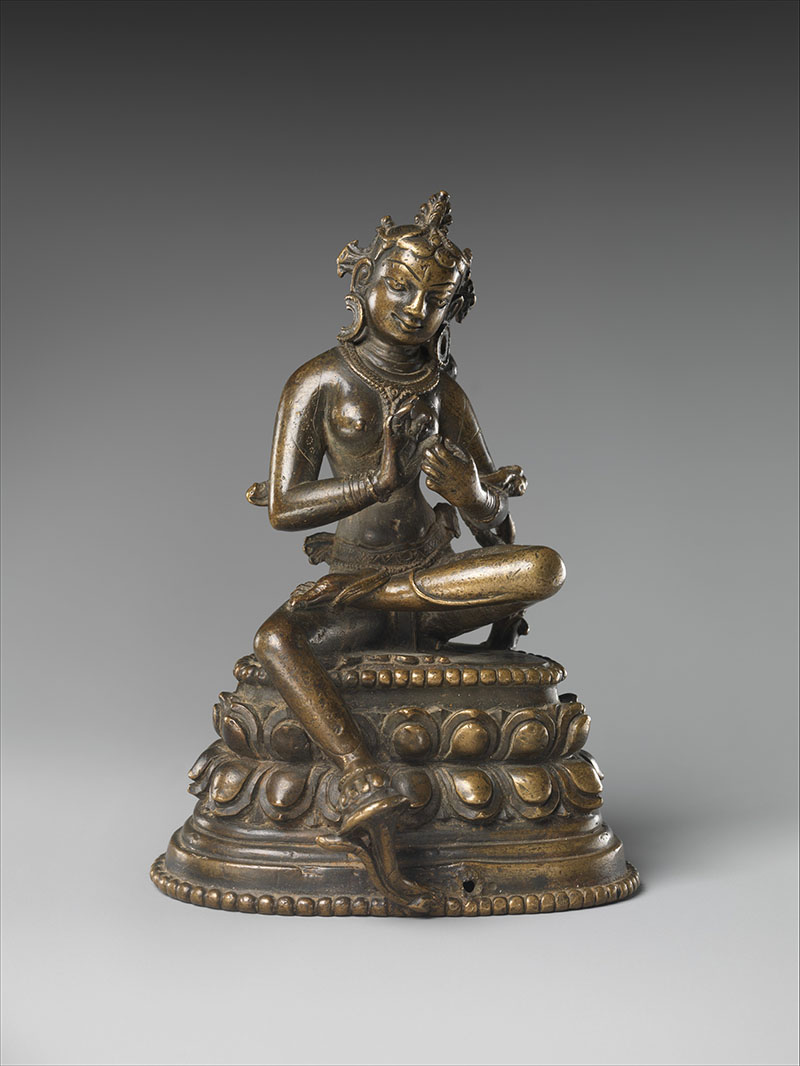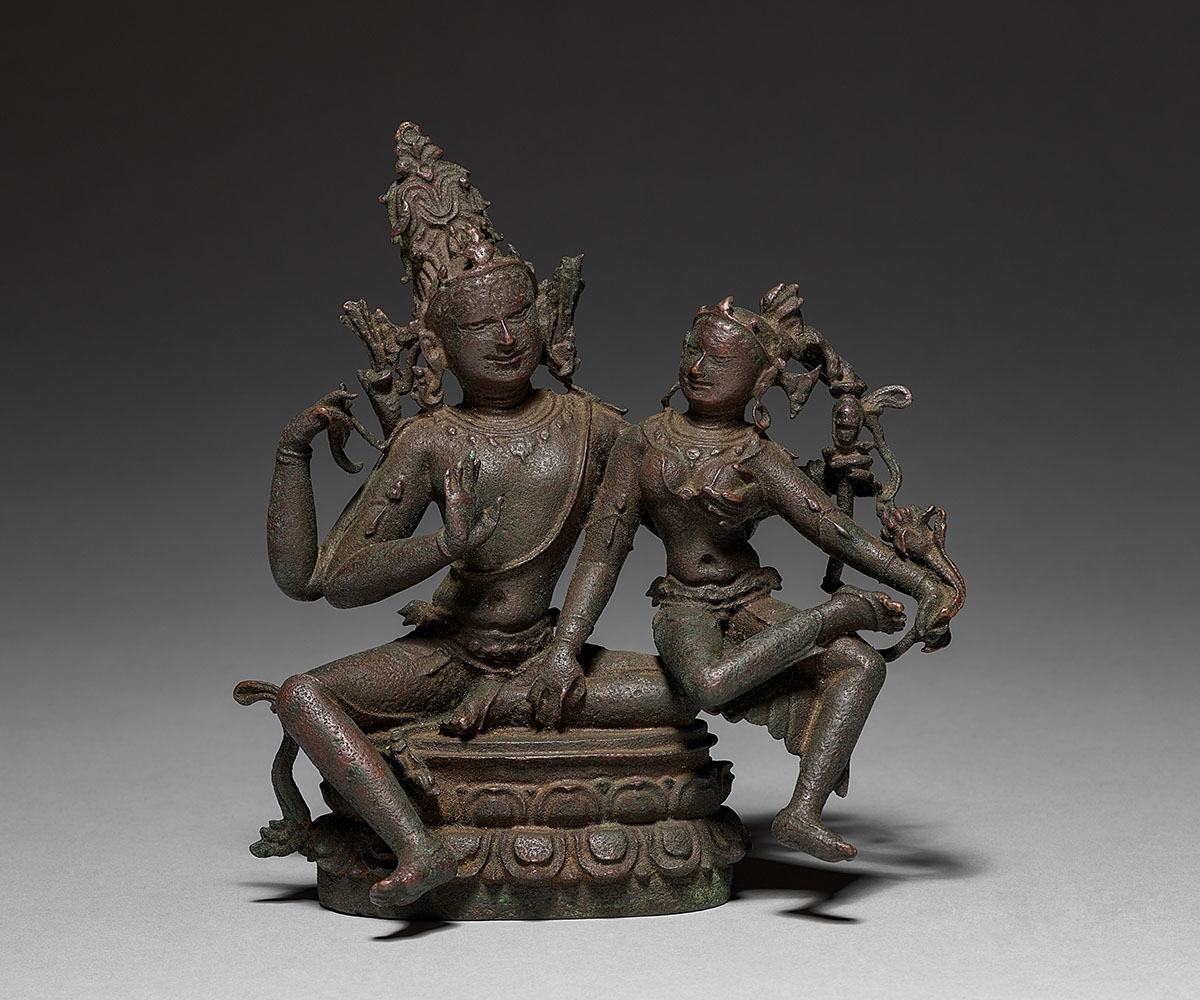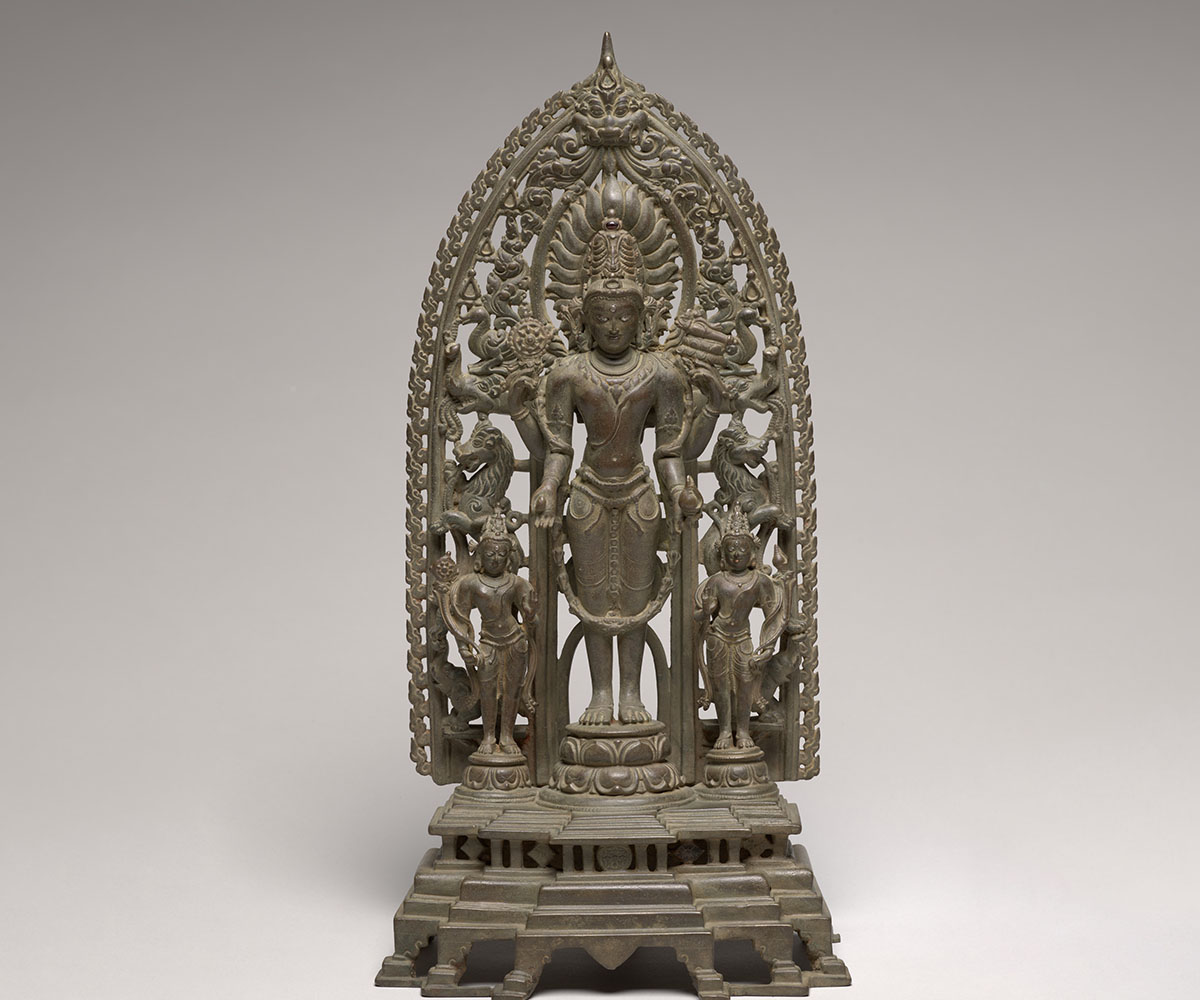ARTICLE
Pala Bronze Sculptures
A Pala bronze sculpture held in New Delhi’s National Museum depicts the episode of the Buddha’s birth in Lumbivana. Maya retired into these woods and delivered the child as she held onto the branches of the sal tree. These figures are represented along with that of Indra, shown receiving the newborn child. The Maitreya form of the Buddha has also been recovered, showing fine silver and copper inlaying, the latter of which can be seen in the reddish hues of the lips. This sculpture, showing the Maitreya seated in the rajalilasana pose, stands at 12 cm.
The National Museum in New Delhi also holds a Shiva-Parvati bronze sculpture, flanked by Kartikeya and Ganesha, carrying the oval-aureole frame at the back, and a layered seating area where Nandi and Parvati’s lion is shown lying at their preceptors’ feet. The same museum holds what is described to be the most elaborate metal votive stupa recovered from India, with parasol rings on top and depicting eight episodes from the life of Buddha. Another notable Hindu divinity depicted is Surya, standing with attendants in one instance and sitting cross-legged in another.
Other institutions housing Pala bronze sculptures include the Metropolitan Museum of Art, the Los Angeles County Museum of Art and the Philadelphia Museum of Art.
Bibliography
Our website is currently undergoing maintenance and re-design, due to which we have had to take down some of our bibliographies. While these will be re-published shortly, you can request references for specific articles by writing to hellomapacademy@map-india.org.










